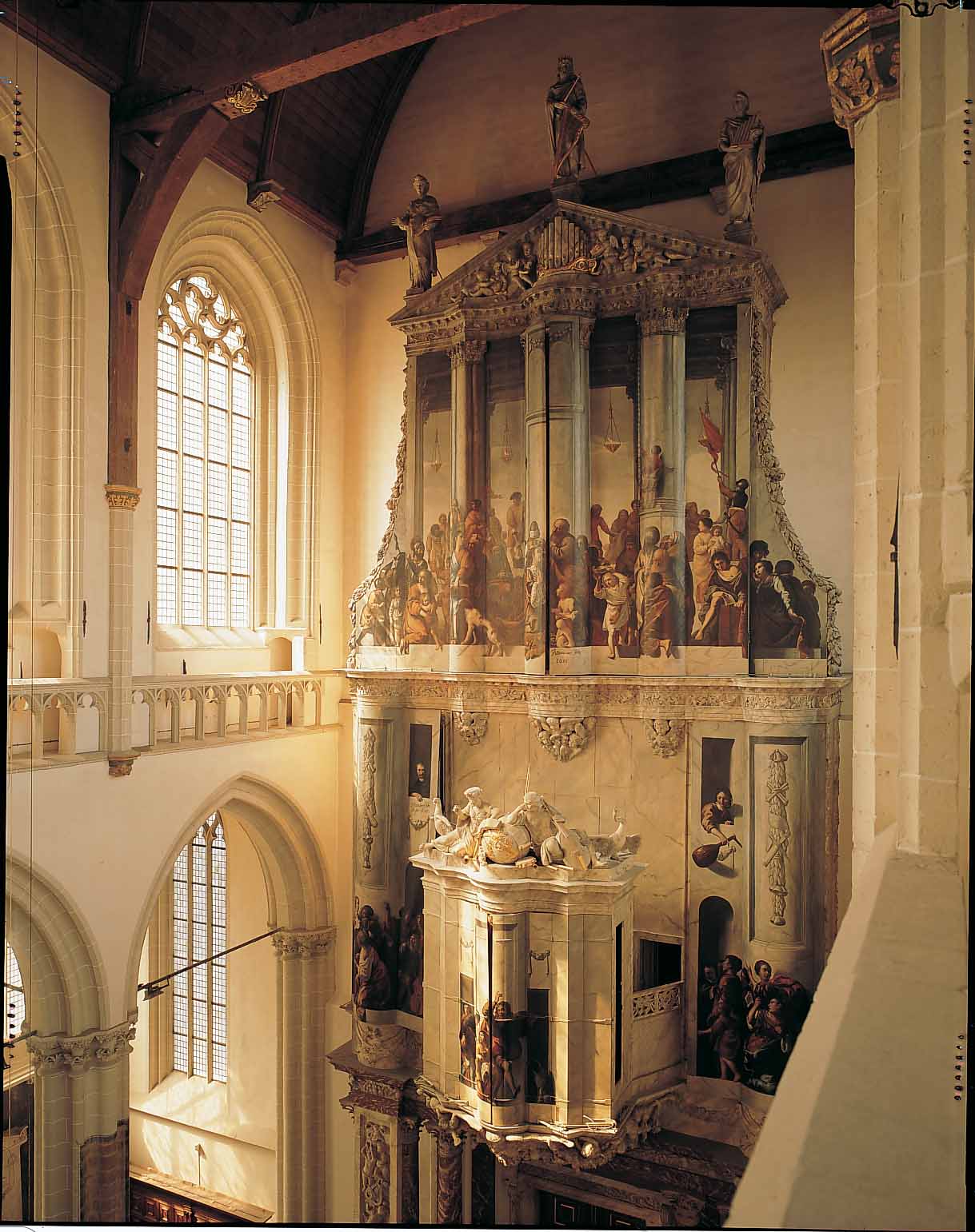Organs
De Nieuwe Kerk possesses two organs: the main organ, which takes up the entire west wall, and a smaller one, which is known as the transept organ because of its location.
In the seventeenth century, the presence of organs in a Protestant church was the subject of controversy. Radical church ministers argued that churches should not be used for anything other than the preaching of sermons. In their view, organ music was unnecessary; indeed, it was a dangerous luxury that might easily arouse sinful thoughts. The Protestant minister J.J. Calckman wrote that the playing of an organ ‘tempts people to thoughts of carnal desire, and not to express sorrow to God for their sins’.
The city’s government took a different view. They emphasised the educational value of music. They commissioned costly organs – such as those in De Nieuwe Kerk – and hired organists to give concerts. These were intended partly to keep people out of the public houses. Thus, De Nieuwe Kerk functioned as a public music auditorium, where organ music could be heard almost every day.
In 1641, Constantijn Huygens wrote an influential book on the use of church organs (Gebruyck of ongebruyck van ‘t orgel in de kerken der Vereenighde Nederlanden) in which he passionately advocated the use of organ music in religious services. He saw it as an effective instrument to improve the congregation’s singing. One by one, the cities of Holland were won over: Amsterdam in 1680. From that year onwards, the Psalms were sung in De Nieuwe Kerk to the accompaniment of organ music. The main organ had been expanded shortly before this, possibly with a view to its new function.
De Nieuwe Kerk hosts regular organ concerts. Since 1981, De Nieuwe Kerk’s permanent organists have been Gustav Leonhardt (he died in January 2012) and Bernard Winsemius. Henk Verhoef was appointed 2nd permanent organist as of 1 January 2013.
Main organ
Organ, 1655: Hans Wolff Schonat, enlarged 1673 by Jacobus Galtusz. van Hagerbeer and Roelof Barentsz. Duyschot; organ case: Jacob van Campen; sculptures: Artus Quellinus; painting: Jan Gerritsz. van Bronckhorst

In 1645 the City of Amsterdam decided to commission a great organ for De Nieuwe Kerk. Ten years later, it was ready. The best artists had collaborated on it, and the result bore testimony to their brilliance: a monumental instrument, with the appearance of a classical temple.
The decorations all relate to music. Standing on the organ is King David with his harp, together with women depicting the arts of singing and playing music, while the painted panels beneath show David’s anointment as king. The lower panels show musicians, with the painter himself appearing behind a pane of glass. When the panels are open, we see on the left David’s march of triumph after he has killed Goliath, and on the right David playing the harp for Saul. Music is also a recurrent theme in the other decorations, such as in the relief under the organ, which includes the symbols of Amsterdam.
Transept organ
16th century; 1645 reworked by Germer Galtusz. van Hagerbeer; 1986–89 restored by Flentrop Orgelbouw

This small sixteenth-century organ escaped destruction in the fire of 1645, because it was undergoing restoration in the workshop of the organ-builder Germer van Hagerbeer. It was reinstalled in the church that same year, displaying Amsterdam’s coat of arms. Until the main organ was completed in 1655, it was the only instrument in the church. After that, it was played when the church was open, but not during services. After 1700 it fell into disuse.
The organ is elegantly constructed, with three towers. The main case dates from the 16th century, but the side case and balcony date from 1645. They are by Albert Jansz. Vinckenbrinck, who also made the pulpit. To the right of the organ is the orphans’ gallery, so called after the children of the municipal orphanage (Burgerweeshuis), who attended services here.